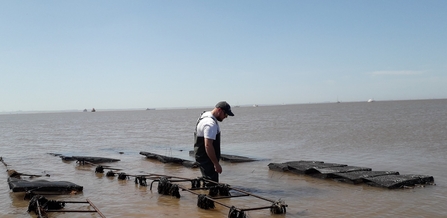Take in the view from the banks of the Humber Estuary, and you’ll be met with one of the most important conservation sites in the UK. It’s a huge – and complex estuarine system that drains one fifth of England’s land. It is a mosaic of important habitats ranging from mudflats to saltmarsh, reed beds to coastal dunes and vast wetlands.
But this landscape and its panoramic vistas used to be very different. During the 1800s Cleethorpes was the centre of UK trade for its ‘large and cheap’ oysters. 300 acres was developed as raised oyster layings, cultivating over 10 million oysters a year. This thriving industry was one of the largest employers in the town. 150 men worked the fishery at its peak. And the reason for this substantial industry? At that time the Humber supported one of the most prevalent native oyster populations in the UK, with beds so expansive they were a recognised shipping hazard.
The native or flat oyster is grey or darkish blue in colour like stone. It has tree-like growth rings that give tell-tale sign of age. With one curved and one flat side, they are designed to cement themselves to shells, rocks and each other. This fusing allows oysters to create dense beds - a rare and special habitat found only in a few places in the UK. These reefs create their own localised ecosystems and provide shelter and food for a multitude of animals.
Unfortunately the tale of Cleethorpes oysters does not end well. In 1904 an outbreak of typhoid was linked back to the town and the oysters where deemed unfit for eating as sewerage pipelines were found to be polluting the layings. This was the start of a rapid population decline. By 1940 oyster stocks in the Humber were extinct.


